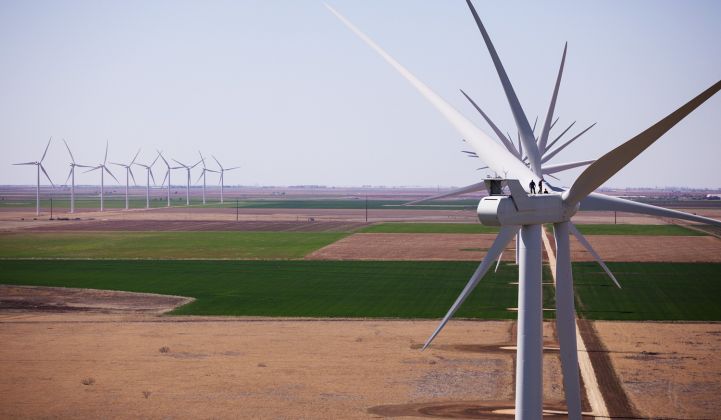Vestas posted record orders and deliveries in 2019 and expects more huge numbers this year. But the world's largest supplier of wind turbines may face stiffer headwinds than its main rivals if the coronavirus outbreak continues to disrupt China’s supply chain.
Vestas on Wednesday reported a 2019 net profit of €700 million ($770 million), up 2.4 percent over the previous year. Revenue surged 20 percent year-on-year, to €12.1 billion, with 2020 guidance set at €14 billion to €15 billion.
CEO Henrik Andersen, who took the reins last year, said execution costs had increased in 2019 due to "trade wars and tariffs," a dynamic that looks set to continue in 2020. The U.S. is the largest single market for the Danish company.
Vestas delivered a record 12.9 gigawatts of turbines last year, but its earnings before interest and taxes (EBIT) margin has been under pressure, falling from 13.9 percent in 2016 to 8.3 percent in 2019. Margin guidance for 2020 is 7 to 9 percent, with a longer-term goal of lifting it to 10 percent.
In addition to its onshore wind turbine business, Vestas is the joint owner of offshore wind manufacturer MHI Vestas. Revenue at MHI Vestas came in at €1.4 billion, with a profit of just €6 million.
CFO Marika Fredriksson said 2020 profits at MHI Vestas would be “pretty flattish, pretty low.”
The coronavirus wild card
With trade tariffs the major headache of 2019, the big unknown quantity for 2020 is the extent of the disruption from the coronavirus outbreak.
Compared to rivals SGRE, GE and Nordex, Vestas has "the most exposed supply chain presence in China," said Shashi Barla, Wood Mackenzie's principal analyst for the global wind supply chain.
Vestas makes blades, nacelles, generators and control systems at an integrated manufacturing plant in Tianjin. "They also source towers, blades and gearboxes from Western and domestic Chinese suppliers," Barla said.
On a call with investors, CEO Andersen said Vestas took the outbreak into account in making its 2020 guidance, but if disruption goes on much longer, it may have a greater impact than the company accounted for.
“If China remains closed for weeks or months, then we are looking at a global pandemic force majeure,” said Andersen. “Our thoughts right now are with the nearly 3,000 colleagues of ours in China."
Vestas is currently working on the assumption that production activity will ramp up again next week. The global solar industry is also nervously watching the situation, fearing increases in module prices if factories remain closed much longer.
Vestas is far from alone among renewable energy companies in being affected by the outbreak. The full extent of the shutdown has been tempered to an extent by the Chinese Lunar New Year holidays, which were officially extended by the government in an effort to reduce the potential for the spread of the virus.
“It affects the...world’s entire supply chain," Andersen said. "It’s right from commodities to components and for us as well a very high level of assets that we transport. […] That is going to hurt us as much as it is going to hurt the rest of the world in [terms of the] supply chain.”
Force majeure certificates are now being issued under certain conditions by authorities in China, according to the country’s ministry of commerce. There are various other clauses that could remove or shift contractual liabilities, as explained in an update by law firm Clyde & Co.
A complex period of negotiation and resolution could well follow the acute period of disruption currently being experienced. This would be an unwelcome additional hurdle to exporting and importing with China.
Correction: This story previously stated that Tianjin bordered the province at the center of the outbreak. There are actually two provinces between the municipality of Tianjin and Hubei.
***
Join Wood Mackenzie's upcoming wind webinar, Winds of change in onshore wind O&M - a look into 2020s, on February 20th, at 11:00am GMT.




